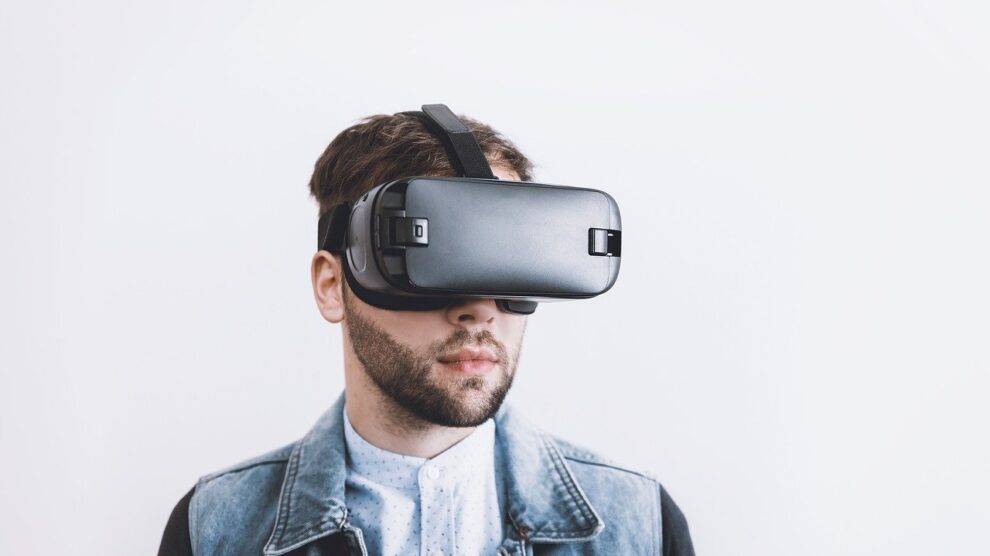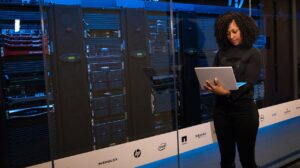If you Google “virtual reality in the classroom,” the web comes back with dozens of articles telling you how teachers will no longer be limited by the size or location of their classroom. These articles talk about how VR can be used for field trips to any time or place, or can be used to teach lessons in diversity, empathy, and creativity. While it’s possible the technology will eventually be used to achieve all these things, there are hurdles that have to be overcome before VR can be considered a regular classroom tool.
Proper Supporting Infrastructure and Usability
As with any new technology, there’s going to be a transition period to allow educators to familiarize themselves with how the platform works. While some educators will be comfortable with the nature of virtual reality’s immersive world and will implement its use as soon as it is available, others will require training and hands-on learning time before they can share all the possibilities with their students. A teacher cannot properly teach with a tool unless they have reached competency with that tool first.
Additionally, excellent broadband connectivity has to be widely available before virtual reality platforms will perform without latency issues like buffering and stalling. VR relies on solid throughput, preferably on a 5G network.
This type of service is available now in a few of America’s largest cities, with markets expanding significantly through 2020. But internet service in our most rural schools struggle to provide even the most basic internet connectivity to their students; it is a near certainty VR implementation will remain unattainable to these school districts for an indefinite period of time.
Health, Emotional, and Safety Issues
Side effects have been noted in some users when working within immersive VR environments. Ranging from eye strain and blurred vision to balance issues and nausea, some students may experience negative side effects while interacting with a VR lesson plan. An action plan for student safety will have to be included when designing any virtual reality program, with an alternate way for a student to access the information being offered if they have a genuine problem interacting with the technology.
Some students may refuse to accept the required headgear. Students with sensory differences may find this equipment uncomfortable due to the way it rubs at the back of their ears or pulls on the back of their head. Some may find the necessary visor/headgear claustrophobic.
Secondly, current technology creates an issue in maintaining supervision on the real-world classroom while guiding students within a VR simulation. Unless educators are working in teams, this will become a significant problem where instructors must effectively bridge and work within both worlds simultaneously. Many applications lack an option that would allow facilitators to follow along on a tablet or laptop. Such a feature would give educators simultaneous access to both the VR simulation and their real-world setting. Another factor to consider is the need to guide students through online menu choices, which can be challenging if the pupil cannot adequately explain menu options as they are seeing them.
Finally, if schools choose to run VR simulations using a “bring your own device” system paired with a DIY VR headset like Google Cardboard, your school’s network will need to be configured with role-based access control, if it’s not already. This will allow network admins to know when, how, and which students are on the network, and what they’re doing while they’re connected.
Cost
The cost of VR hardware is a serious stumbling block for many school districts. While the imagined ideal when describing VR implementation has an entire classroom of students immersed in a field trip to the Louvre or to the inside of an active volcano with the teacher guiding them, the reality for most districts will have educators rotating one or two headsets between 25 or more students for shorter VR immersion activities. The students who do not have headsets will work on complementary activities built into the lesson plan.
Cost for adding VR to a classroom can be mitigated in part by effecting a BYOD policy and using a carrier like Google Cardboard (which even has DIY plans) as a VR headset. However, Android devices paired with Google Cardboard may not provide the educational experience desired due to limited applications. And while the Google Cardboard headset is exciting in that it offers a way for anyone with a good cell phone a way to experience VR, it also offers the most basic VR experience to users. Literally made from folded cardboard, it has no way of tracking head or eye movement, and relies on the quality of the phone for its visual and audio performance. Phones lacking a gyroscope are not compatible with the VR applications and cannot be used.
The future for virtual reality use in the modern classroom is bright. But the full realization of its potential will rely on educators who need to develop expertise and practical experience with the technology. It will also rely on variables like adequate telecommunications and investment.





